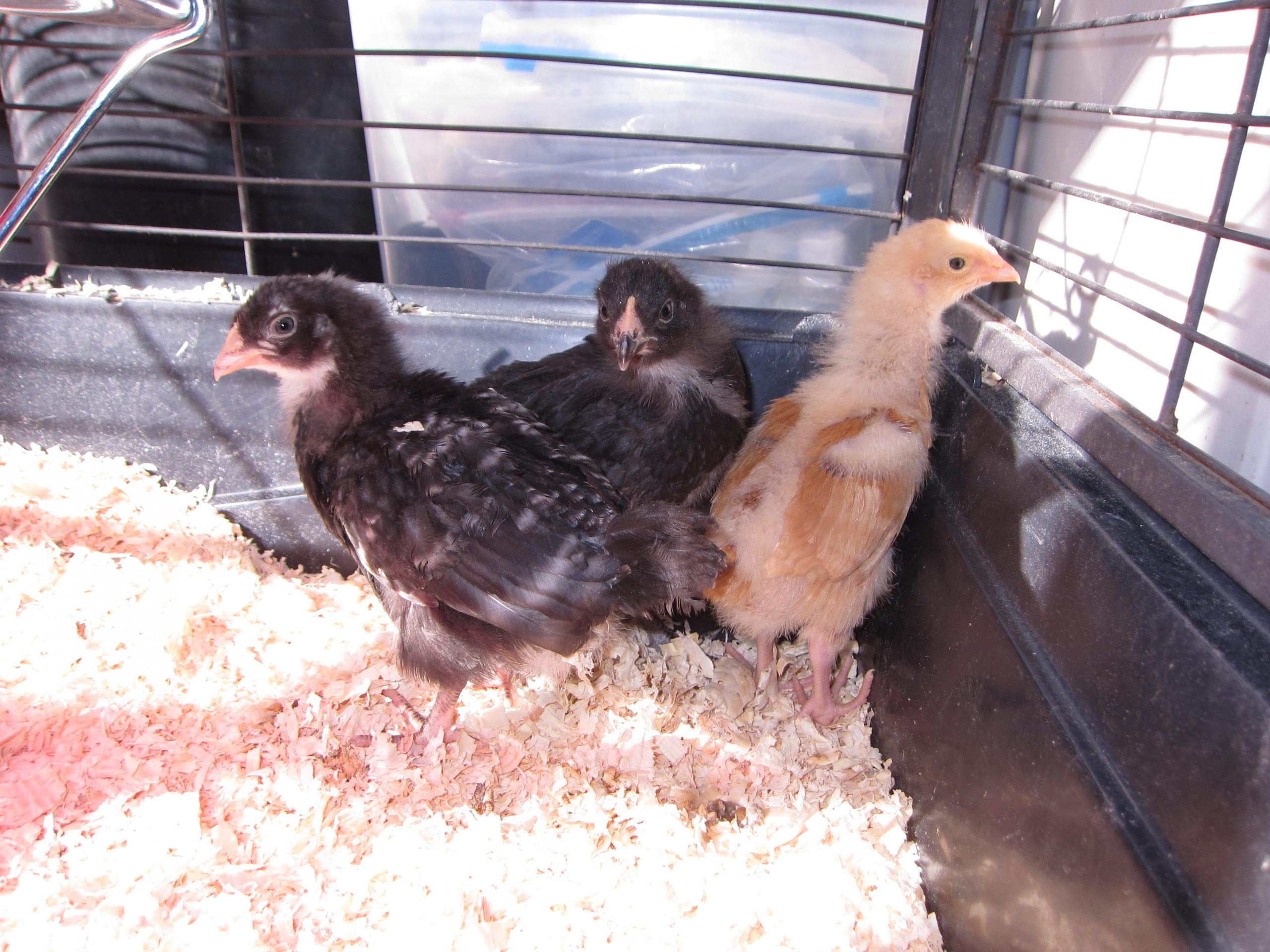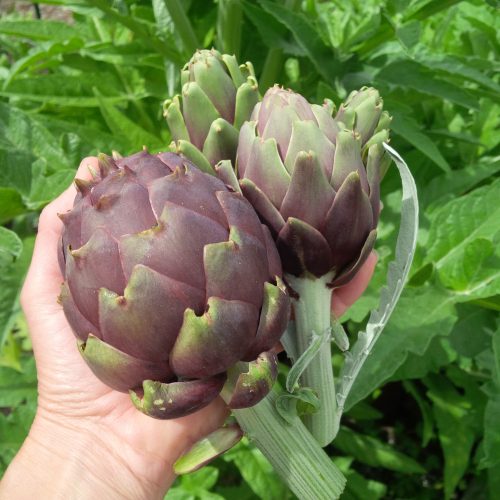We have a new addition to the Gardenerd family: three spring chickens! Our three existing ladies are nearing retirement age, though they are still productive, and we wanted a boost in our supply.
We’ve never raised chickens from chicks before, we’ve always purchased 10-14 week-old pullets, so this is new for us. We jumped in head first, with the guidance of the folks at Malibu Feed Bin.
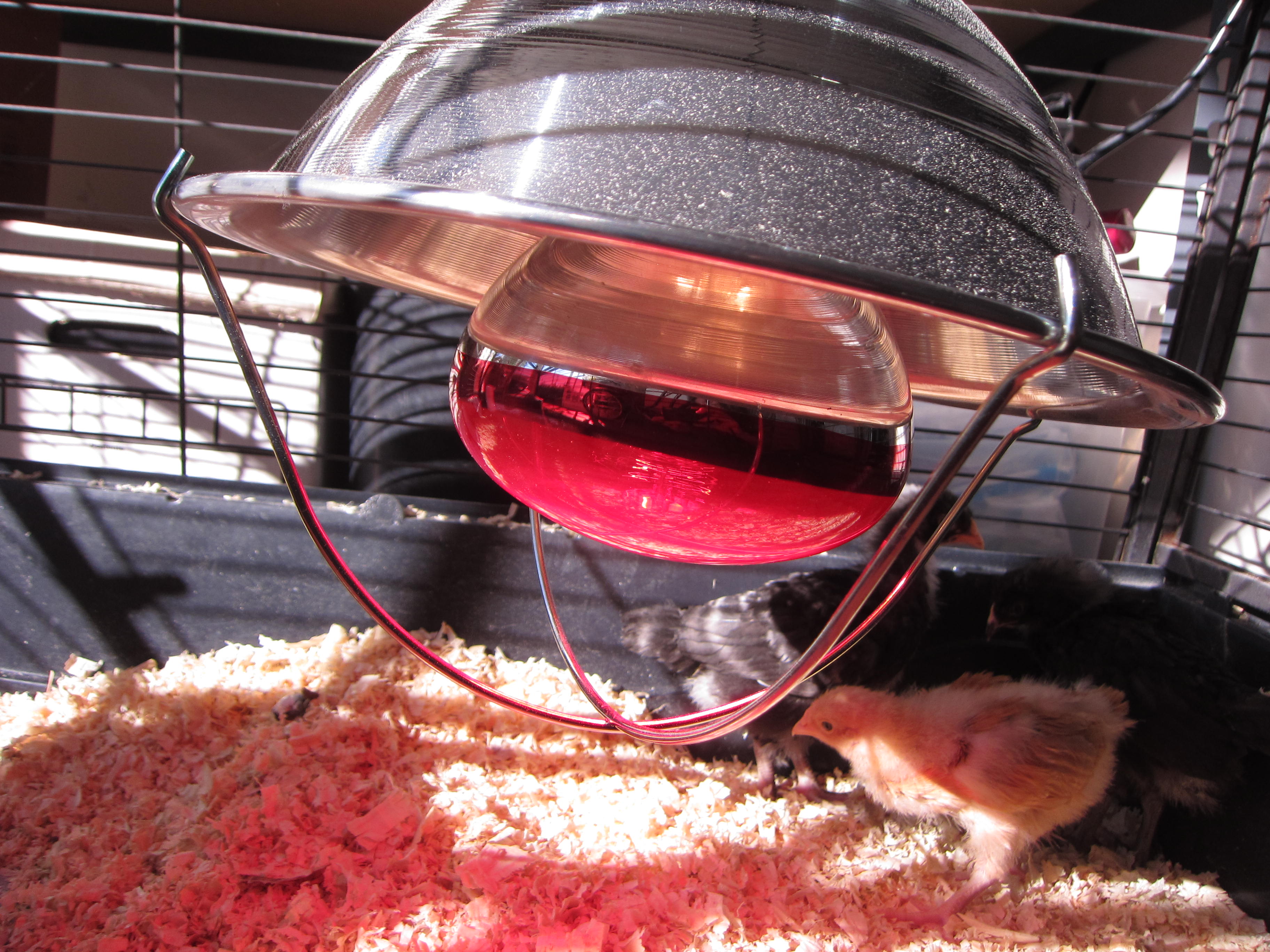
We didn’t have any equipment for raising chicks, but knew they needed a heat lamp. Chicks need constant warmth for 6-8 weeks while they grow. The lamp should hang so the bulb is about 1 foot above the chicks.
They also have to be isolated from our other hens to keep them safe until they are big enough to fend for themselves on the playground. The woman who helped us offered to give us a cage she brought from home to get rid of. It turned out to be the perfect size for our new babies. Housing, check.

We placed the cage in our garage (that has a window), added a layer of pine shavings for bedding, hung the lamp and we were all set. We purchases a small feeder, pulled out our extra water jug and boom! Instant chick shack. Accessories, check.
We have a bag of Modesto Mills Organic Starter Crumbles on hand, and will eventually crush up some mealworms as they get a little older. Feed, check.
Meet Our Spring Chickens
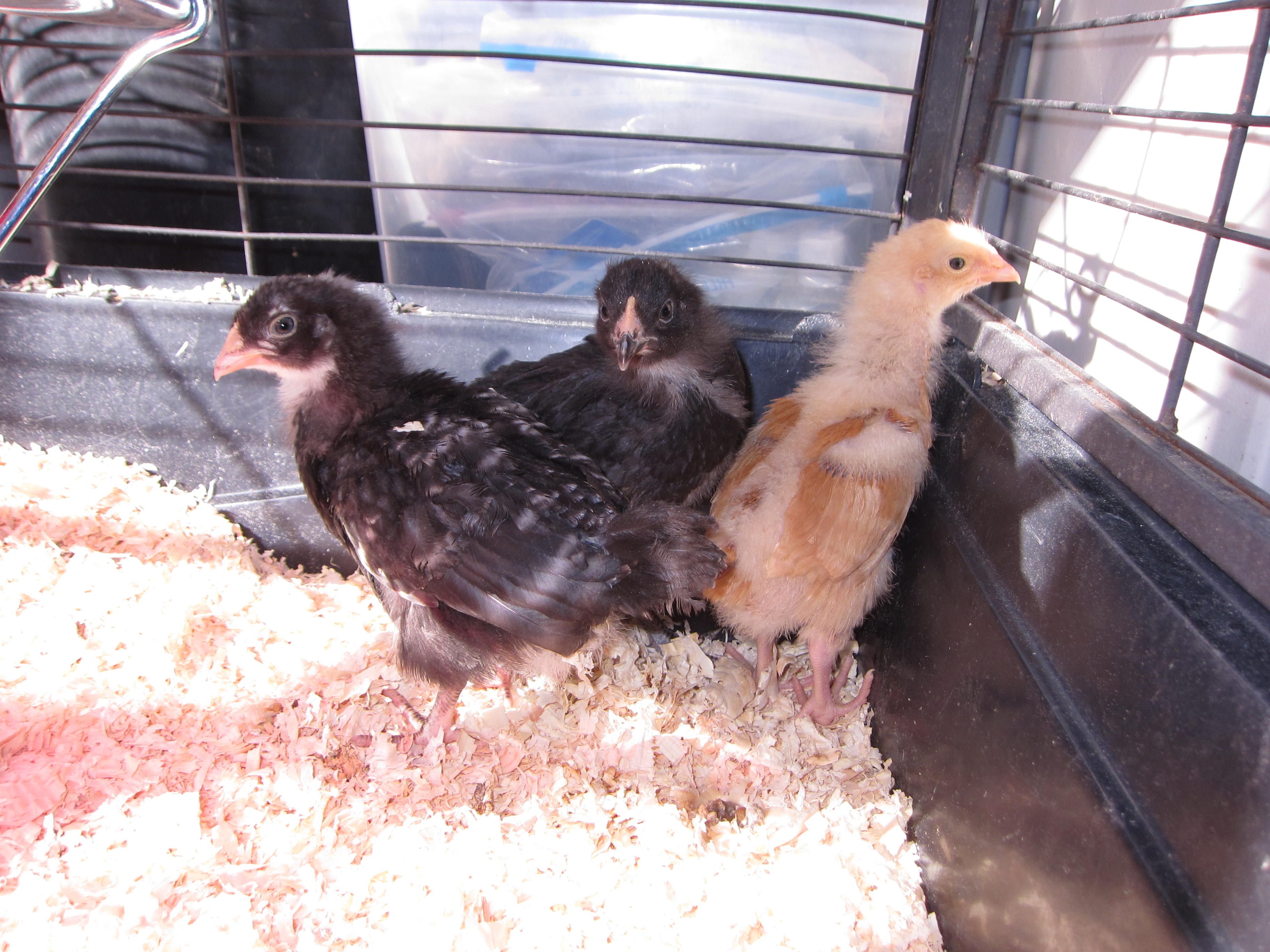
Mildred is a Cuckoo Maran who will hopefully lay chocolate brown eggs. Olive is, of course, an Olive Egger, and Betty is a Buff Orpington who will lay brown eggs.
Our strategy is to have each hen lay a different color egg so we can track who is laying, and who is not (or sick). We may have some overlap with Betty, since Sylvia our Silver-laced Wyandotte lays brown eggs that are pinkish-peach. Hopefully Betty’s eggs will be more brown.
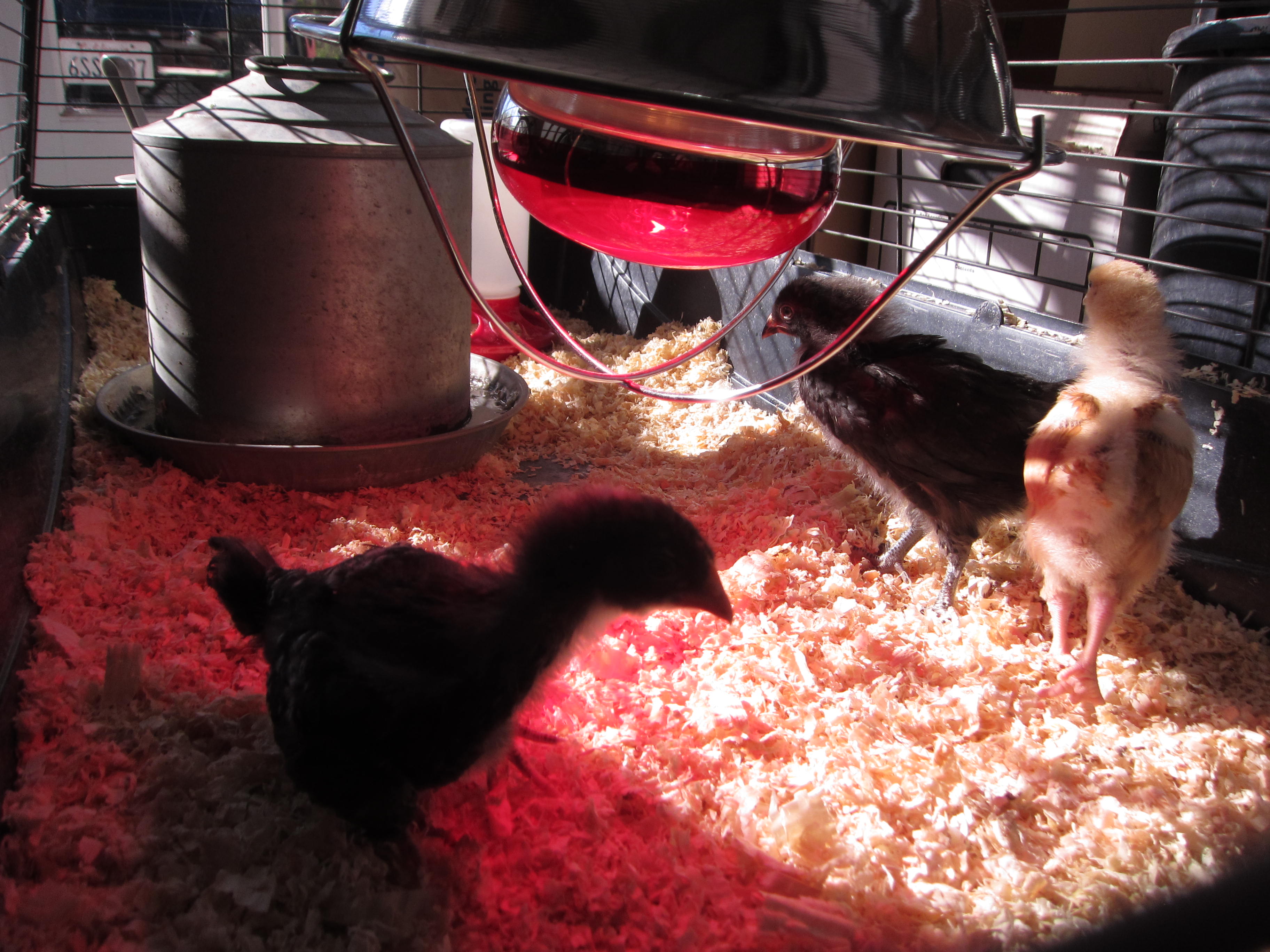
Chicken Integration
These chicks are 2.5 weeks old and have already begun to suss out their pecking order. We pick them up several times each day to acclimate them to being handled. In 6-8 weeks we will move them to the backyard, but will keep them sectioned off from the other hens. They will be able to see each other, but can’t interact until about a month later.
One caveat: Malibu Feed Bin says the chicks are 90% sexed. Meaning there is a 10% chance our Olive is an Oliver, or that Mildred is a Martin. Betty has a short tail, which, we were told, means that she is most likely a she. So fingers crossed!
Join us as we venture into the world of raised chickens from chicks. If you have done it already, and have any advice, post your comments below. We’re excited to be on this journey and will report our findings as our spring chickens grow.

